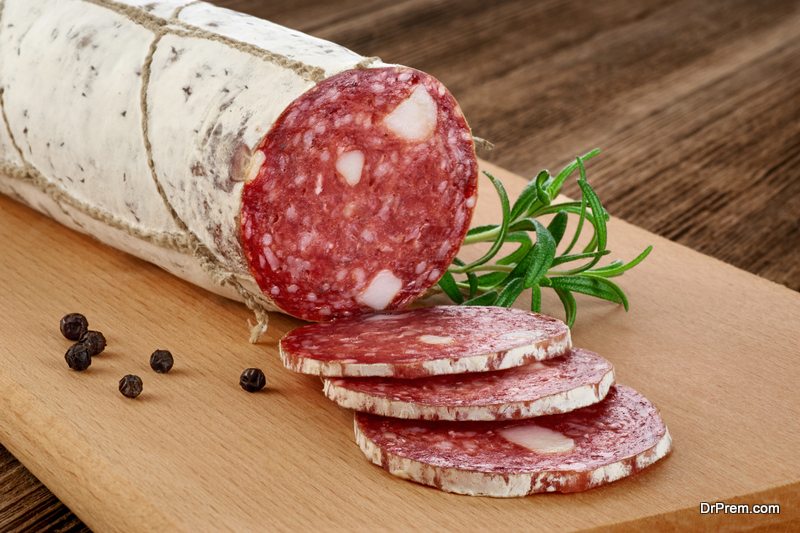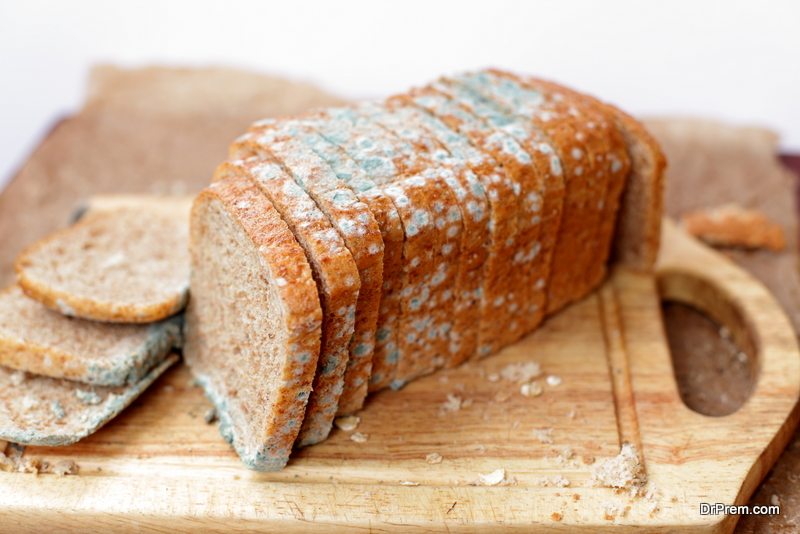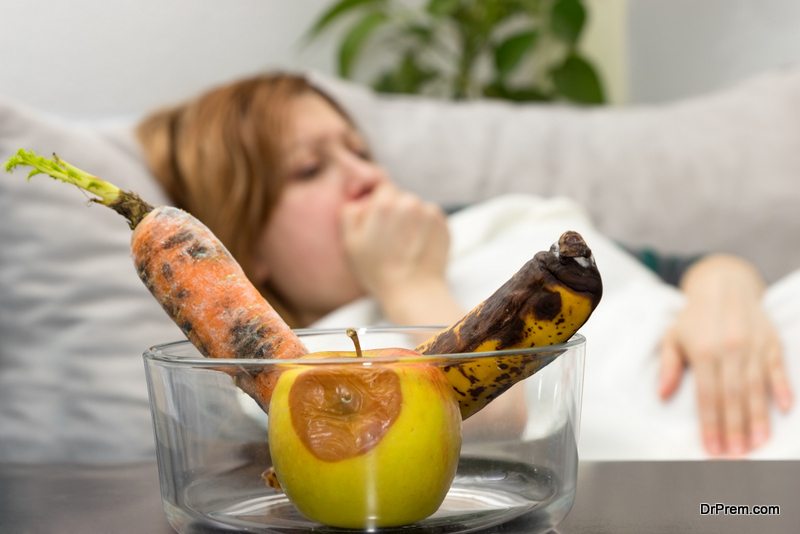Mould is probably the biggest enemy of stored food. It is, precisely, bacteria that grow on your food, feeding on it, and spreading itself around. This, usually makes the food item unfit for consumption. There are certain rules to decide if you should get rid of mouldy food or consume it as some moulds are harmless and consuming the food item will pose no threat whatsoever.
But usually, moulds can cause serious health issues in the individual. Mentioned below is a list of ways by which you can make out if your food is mouldy or not. And if it is, whether it is safe for consumption or not. Read on to know more about the same:
Mouldy cheese:

Cheese is a food item that is high on moisture content, and also has a pretty low shelf-life. It is best to avoid consuming cheeses if there is even a slight visibility of mould on its surface. There is a high chance that the deeper layers have also been infected, and hence it must be discarded immediately.
Fruits and vegetables:

Fruits and vegetables like bananas, mangoes and spinach or tomatoes are full of moisture and hence it is important to keep them away if mould develops on them. On the other hand, hard cover vegetables like carrots and cabbages can be consumed after scarping off the mouldy part. This is because these items have a thick skin which cannot be easily penetrated by mould in a short time.
Cream, and milk products:
Liquid items are the most prone to contracting infections if not kept refrigerated. In case such an issue occurs, milk products should immediately be discarded since they usually come with an expiration time limit.
Moulds on meat:

Cooked or raw, meat cannot be consumed in any case of mould on it. Leave it be, and there must not be any reason for you to consume it, even after getting rid of the part affected by mould. Such meat may be eaten if it has been kept frozen. But only after discarding the affected part of it.
Cooked food:
There is no scope for discussion in getting rid of cooked food that has mould growing on it. It is better to throw them away if they have even the subtlest hint of mould on them.
Baked foods:

Baked and fried foodstuffs like cakes and bread must not even be given a second thought before tossing them into the bin. These items are not meant to be stored for long, and if mould develops on them, the wisest option is to get rid of them at the earliest.
How do you address mould on your eatables?
- Speaking of foods with plenty of moisture content like cooked grains and cooked meat, they should always be discarded. If mould is visible on the surface of these foods, there is a high chance that the lower layers have already been contaminated. The safest option here is to not consume it.
- Uncooked, but soft, vegetables and fruits like tomatoes, carrots and bananas must also be gotten rid of as soon as possible lest you want them to infect other foodstuffs on your rack.
- After addressing the mouldy foodstuffs, look out for any other food item in the vicinity that may also have been affected due to the mould growing in its neighbourhood.
Having said all that, it is always safe to not consume food which has a visible mould on it, especially if you are not sure about what kind of bacteria it is. It is always better to be safe than sorry. Speaking of precautions, there are plenty of ways by which you can make sure that your food remains fresh and free of moulds.
This is so that you never put yourself in a situation to choose between eating and not eating mouldy food. Also, some moulds are too small for the naked eye but may prove harmful to health. All you need to do is keep an eye out for contamination by moulds, and discard the food if spoilt.


